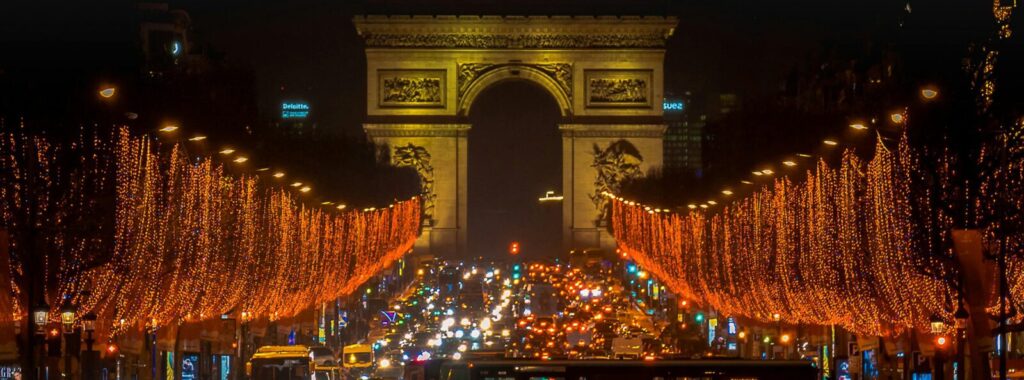A stroll along the Champs-Élysées: luxury, culture, and gastronomy
The Galeries Lafayette Haussmann are a must-see in Paris: a true temple of luxury, shopping, and Parisian culture. However, if you want to discover another side of this city’s elegance, there is an iconic place just a few minutes away: the Champs-Élysées, a majestic avenue stretching from the Place de la Concorde to the Place Charles de Gaulle.
This wonderful avenue is full of cafés, restaurants, Parisian shops, and entertainment venues where you can experience the true essence of Paris. At Galeries Lafayette, you can find practical information and learn about all the mysteries of the Champs-Élysées. Find out more about its history, what makes this avenue so special, the mythology surrounding it, the must-see places and how to get there from our galleries.
The history and significance of the Champs-Élysées
Strolling along the Champs-Élysées is like becoming part of Parisian history. But what are the Champs-Élysées? Where does the name come from? How have they evolved over the centuries?
What are the Champs-Élysées?
The Champs-Élysées is a wide and elegant avenue almost two kilometers long and sixty meters wide, famous for its unique beauty, to the extent that it is known as “the most beautiful avenue in the world.”
It stretches from the Place de la Concorde, where the famous Egyptian obelisk stands, to the Arc de Triomphe. Along the way, it passes through the 8th arrondissement, one of the most elegant areas of Paris and a place you definitely won’t want to miss.
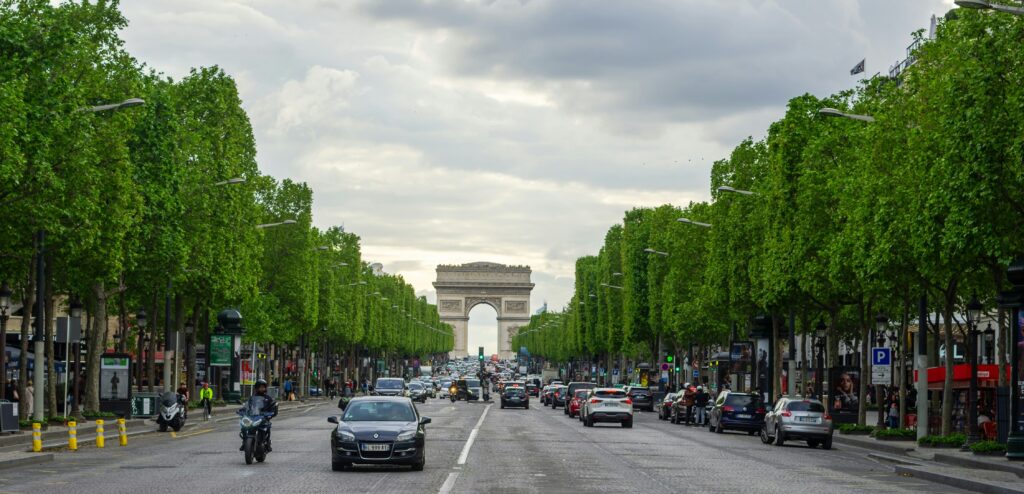
A bit of mythology: why are they called the Champs-Élysées?
The name of the iconic Champs-Élysées avenue in Paris has its roots in Greek mythology. In ancient times, the Champs-Élysées (Elysium) was something very similar to the Christian paradise. It was the resting place reserved for noble and heroic souls after death. There, under the reign of Hades, god of the underworld, peace and eternal happiness reigned. Later, Roman culture adopted the concept and integrated it into its own mythology with the same meaning.
Reaching the Elysian Fields was no easy task for souls: they had to traverse the underworld and cross the River Lethe. Once they had done so, they drank from its waters and forgot all the terrible trials they had endured to get there.
Evolution through the centuries
The transformation of the Champs-Élysées has been an ongoing process from the 17th century to the present day.
Its origins date back to 1640, during the reign of Marie de Medici, when the area consisted of a simple row of trees forming a beautiful promenade. In 1667, the famous landscape architect André Le Nôtre was commissioned to redesign it and integrate it into the urban planning of Paris. It was not until 1724 that the Champs-Élysées acquired its current layout.
In 1838, one of the most significant transformations took place. The famous architect Jacques Ignace Hittorf converted the Champs-Élysées into a modern and functional space by adding sidewalks, fountains, and gas lamps to its layout.
Over time, elegant buildings, cafés, cinemas, and theaters were built, consolidating its status as one of the most important cultural, social, and commercial centers in Paris.
The last major renovation took place in 1994. Currently, under the initiative of Mayor Anne Hidalgo, a new project is underway to make the Champs-Élysées more eco-friendly and pedestrian-friendly. This renovation is expected to be completed in 2030.
What is so special about the Champs-Élysées?
The Champs-Élysées has been the setting for countless momentous events that have shaped the course of Paris.
- During the French Revolution, it was renamed the Champ de Mars and became the scene of patriotic celebrations.
- Napoleon Bonaparte ordered the construction of the Arc de Triomphe at the end of this avenue to commemorate his military victories.
- It has been the setting for important international events, such as the French Industrial Exhibition of 1844 and the Universal Exhibition of Paris in 1855.
- Every July 14, the Champs-Élysées is the setting for France’s most important military parade, commemorating the storming of the Bastille.
- Since 1975, the avenue has marked the final stretch of the famous Tour de France.
What are the must-see places on the Champs-Élysées?
If you take a stroll down the Champs-Élysées, here are some places you won’t want to miss:
1. The Arc de Triomphe
You can start your visit at this magnificent monument, commissioned by Napoleon in 1806 (and not completed until 1836, thirty years later) to celebrate his victories. Not only will you be amazed by its architecture, but you can also visit the Tomb of the Unknown Soldier inside. What’s more, if you feel like climbing the 284 steps of the Arc de Triomphe, you’ll be rewarded with one of the most spectacular panoramic views of Paris.
2. The Petit Palais and the Grand Palais
Surrounded by the beautiful gardens of the Champs-Élysées and located near its eastern end, the Petit Palais and Grand Palais, together with the Pont Alexandre III, constitute an extraordinary reminder of the Universal Exhibition of 1900.
Today, the Petit Palais houses the Paris Museum of Fine Arts. The Grand Palais, meanwhile, is home to the Galeries Nationales du Grand Palais and the Palais de la Découverte. A renovation process that began in 2021 is currently nearing completion, and the museum is expected to reopen in its entirety in June 2025.
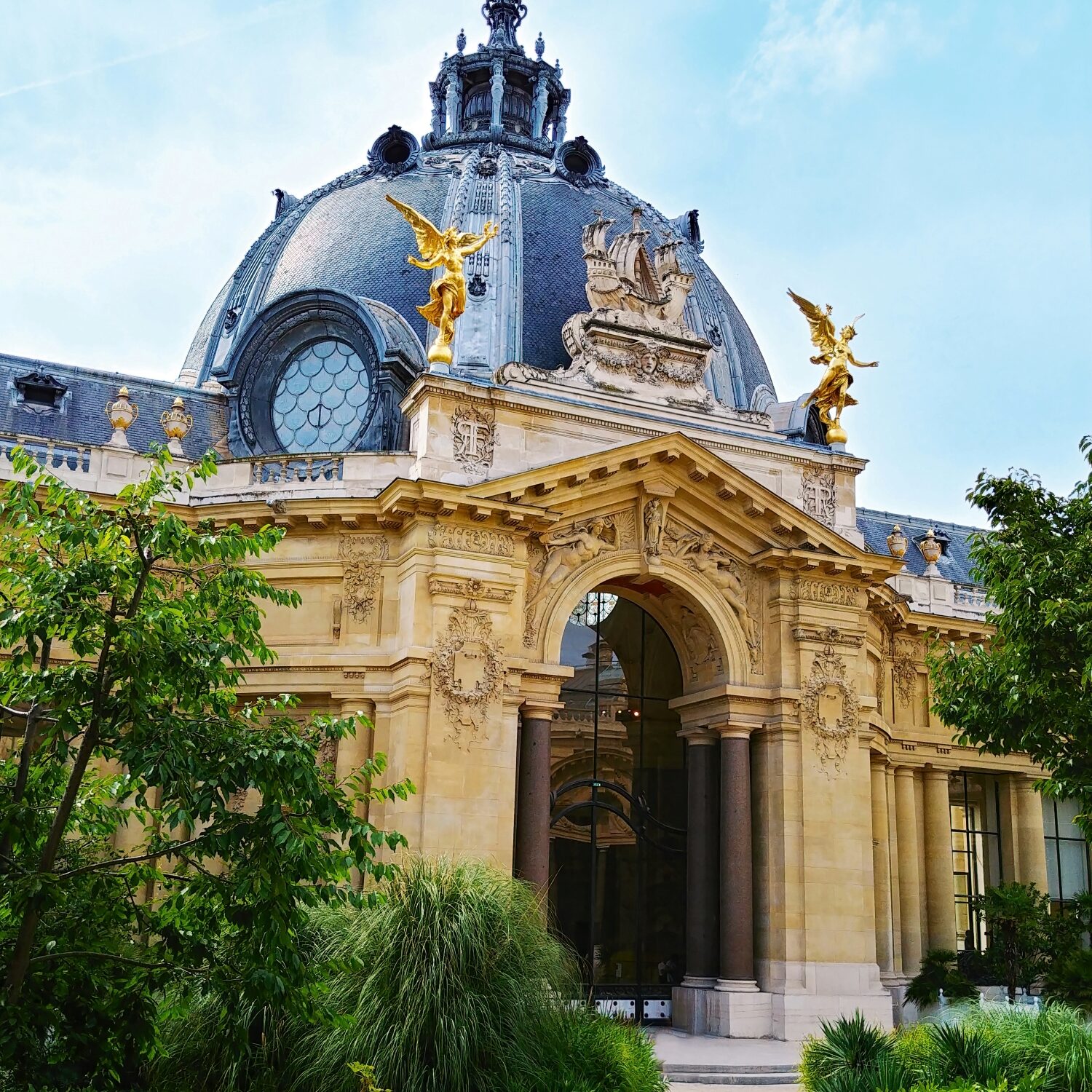

3. The Lido2 Paris
The Lido2 Paris, formerly known as the Lido de Paris, is one of the most iconic venues on the Champs-Élysées. Founded by Joseph and Louis Clerico, this building opened its doors in 1946 and quickly established itself as the most spectacular cabaret in the city. Throughout its history, it has welcomed some memorable figures, such as Marlene Dietrich. However, it became world famous thanks to the iconic dancers, the Bluebell Girls.
In 2021, the Accor group acquired the building with the aim of renovating it. A year later, in 2022, the legendary cabaret was transformed into the Lido2 Paris. Today, this venue seeks to leave behind its past as a variety show and cabaret and become the new Broadway of Paris, presenting a more theatrical and contemporary program.
4. Luxury shops and cafés
If you stroll along the Champs-Élysées, you will find countless interesting places to visit: shops housing the most prestigious brands, such as Dior, Cartier, and Vuitton, as well as more accessible options, such as Sephora, Adidas, and Lacoste.
You can also take a break from shopping in the fantastic cafés and restaurants. Don’t forget to visit Le Fouquet’s, a Parisian staple since 1899, or Ladurée, the famous French patisserie established in 1862 by Louis Ernest Ladurée, which offers unique creations such as its delicious macarons, capable of awakening all your senses.
If you have the opportunity, in addition to visiting Ladurée on the Champs-Élysées, be sure to check out their exclusive Ladurée tea room in Galeries Lafayette Haussmann. There you will find the most delicious pastries in a warm and welcoming atmosphere, along with a unique selection of boutiques featuring the best international brands.
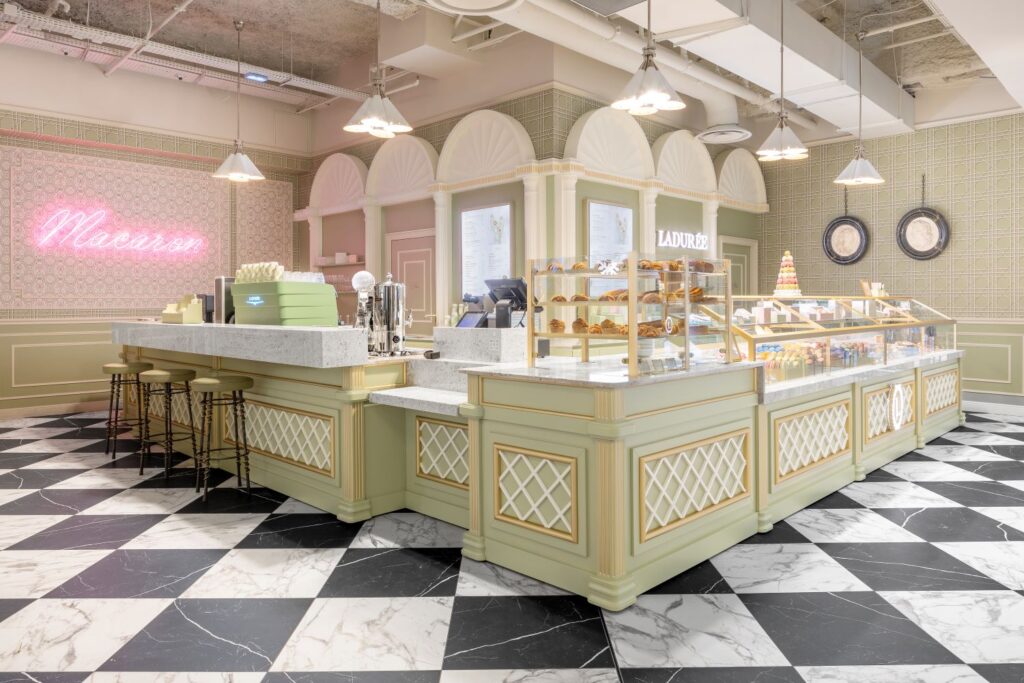
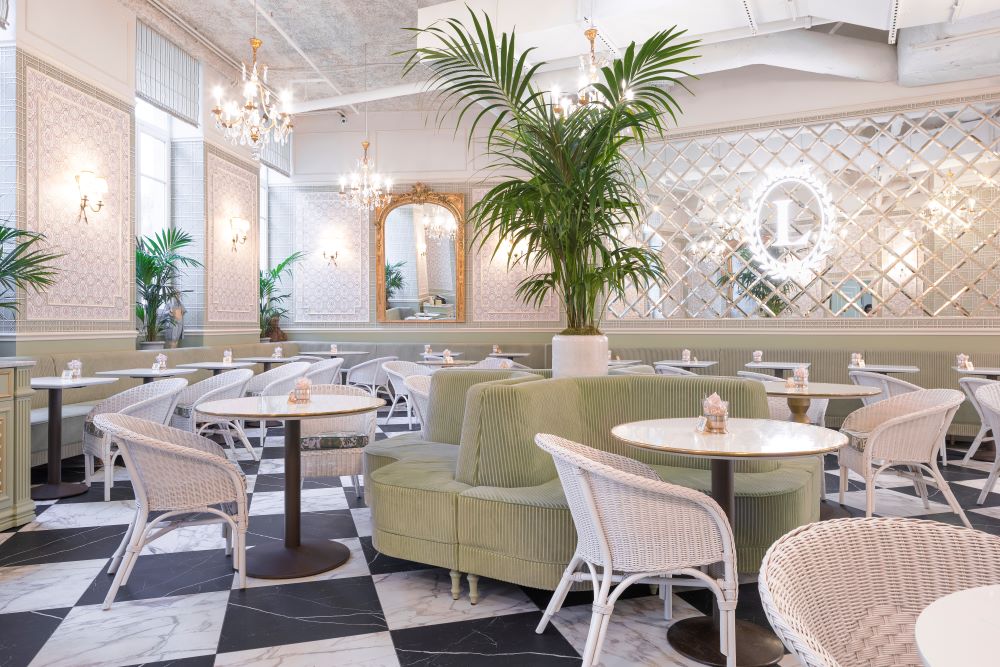
How to get to Galeries Lafayette Haussmann from the Champs-Élysées?
The Galeries Lafayette Haussmann is another must-see during your trip to Paris. Not only is it a leading shopping center, but it also enjoys a strategic location, terraces with panoramic views of the city, and an Art Nouveau dome.
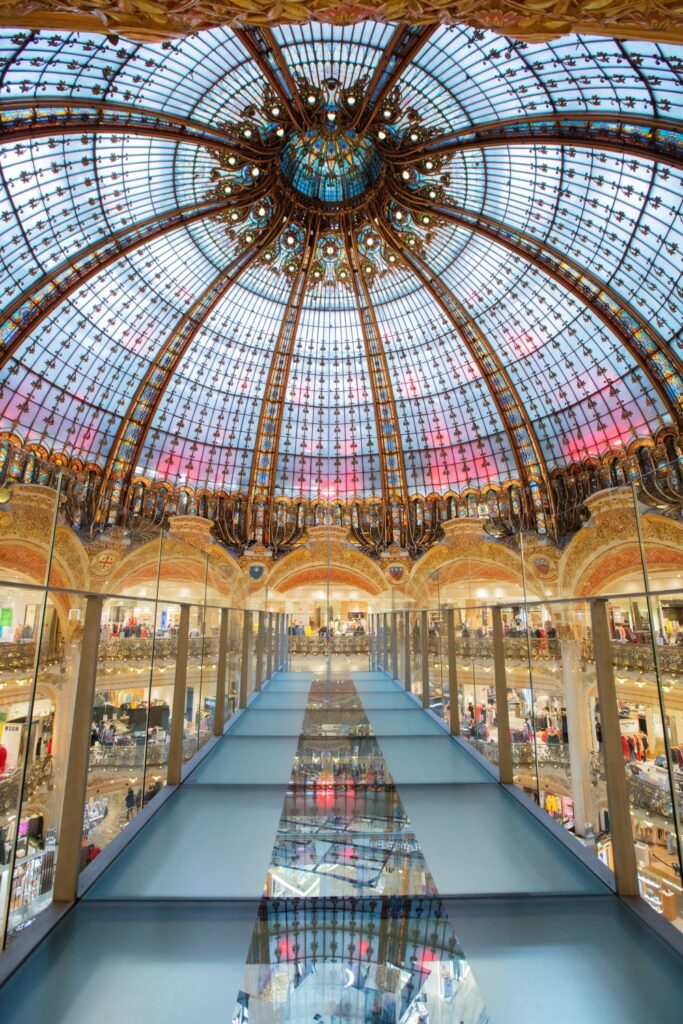

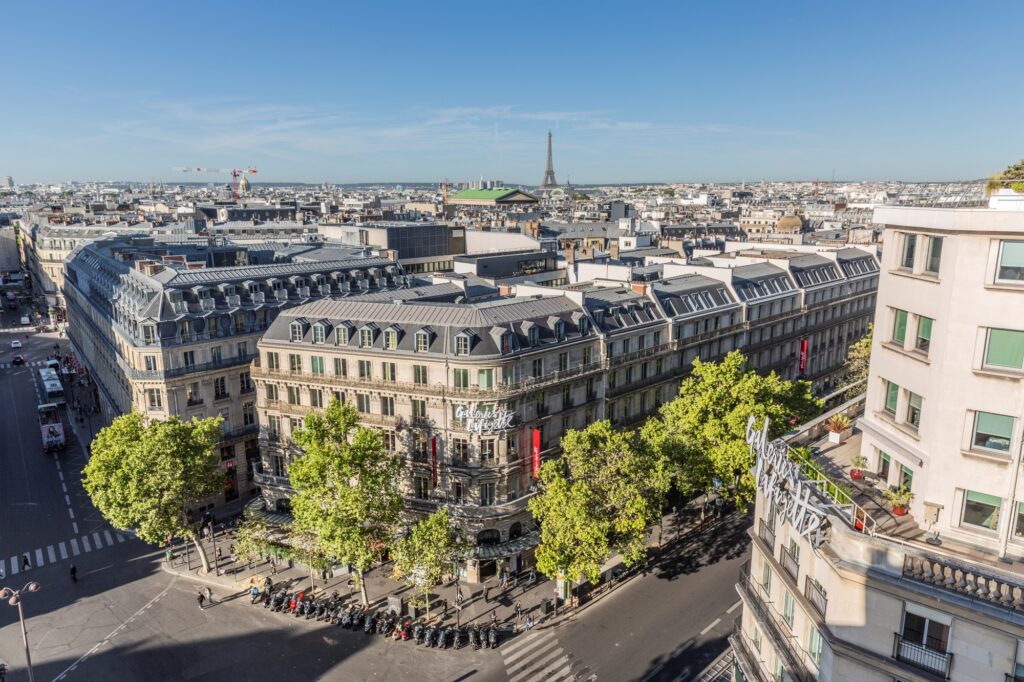
Thanks to its privileged location, getting to the Champs-Elysées from here is very easy:
- If you are traveling by metro, you should get off at Chaussée d’Antin–La Fayette Station (Lines 7 and 9). From Franklin D. Roosevelt Station (Lines 1 and 9) or George V Station (Line 1), it will take approximately 10 minutes. Remember that Line 1 takes you directly to the heart of this impressive avenue. Get off at Champs-Élysées–Clemenceau if you want to start at the eastern end, or at George V if you want to start your tour near the Arc de Triomphe.
- If you prefer taking the bus, you will have the opportunity to enjoy the urban landscape during the journey. In this case, some of the lines that will take you to the Galeries Lafayette from the Champs-Élysées are the 20, 42, or 73.
- Another wonderful option is to get there on foot. It only takes 30 to 40 minutes from the Galeries, and along the way you can visit other magnificent places, such as the Opéra Garnier, the Place de la Madeleine, and the Tuileries Garden.
To make the most of your visit to the Champs-Élysées, we recommend leaving early or at dusk to avoid the crowds. If you decide to go at night, you’ll be amazed by the avenue’s magnificent lighting.
The Champs-Élysées is much more than just an avenue: it reflects Parisian history, culture, and luxury. Strolling along its streets is like stepping back in time to centuries of art, architecture, and tradition, while enjoying a unique atmosphere that combines elegance and modernity. Without a doubt, visiting the Champs-Élysées is an essential experience for discovering the true essence of Paris. If, after strolling along the Champs-Élysées and immersing yourself in its history, you are left wanting more, there is nothing like returning to the beating heart of Parisian elegance: Galeries Lafayette Haussmann. Fashion, culture, gastronomy, and breathtaking views await you to put the finishing touch on a perfect day in Paris.
